Counter-Errorist
THINK TANK
AUGUST 23, 2019
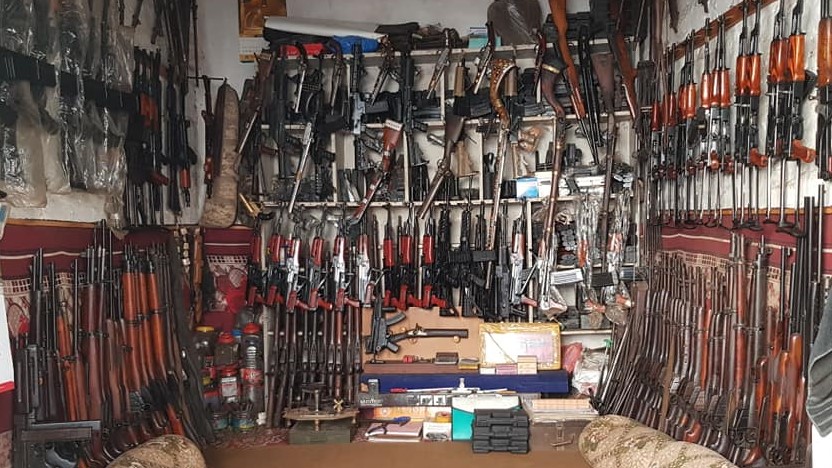
Fog clings to a never-ending row of low-rise buildings down the length of a dusty road, it’s early, around eight o’clock on a cool April morning. The fog clears and voices breakthrough and you see the first glimpses of the large bazaar, sounds of shutters slamming open, doors being unlocked and people greeting each other as their day starts. The occasional chatter of gunfire can be heard as firearms are test fired nearby.
Darra Adam Khel. This bustling town is situated in modern-day Pakistan, a stone’s throw from the Pak-Afghan border. What makes it so special? You may ask and the answer lies within the myriad of myths and legends put out over the years.
As of this year, 2019, Darra is the last main tribal arms market and manufacturing town that remains in the Pak-Afghan FATA region (Federally-Administered Tribal Region – FATA pronounced Faa-Thaa locally), the last vestige of old-world freedom in the area. Over the last few years, the other manufacturing hubs and markets in towns like Landi Kotal, just a few minutes’ drive from Torkham border on the Khyber Pass, have finally died out leaving a handful of shops and a couple of gunsmiths who repair the large number of firearms still found across the region. Peshawar’s massive arms bazaars have also disappeared leaving a few licensed manufacturers in a small industrial estate on its outskirts and a few licensed dealers scattered throughout the city.
Darra held out against the threat of the Taliban in the early 2010s, fighting them off on a number of occasions seeing as they had the arms, supplies and manpower to fend for themselves. They are no friend to these Taliban as you can see even though they have been linked by a few journalistic sources with selling them an enormous number of arms and ammunition. Contrary to popular belief that the market is now dead or not operating, the bazaar still thrives with many firearms bought and sold daily in its now-legendary bazaar. Yes, there were times were the shutters ere down but this was always just a façade, something that happened on the face and business continued in the back alleys and dusty basements.
However, the town of thousands of arms dealers and manufacturing workshops has been relegated to around a thousand of both due to the global war on terror and its impact on the global arms trade and international smuggling routes. They do not get as much as they used to though they still have a steady but small supply of items that get through to them even to this day. Due to this war on terror, the FATA area – which for many years managed to retain its autonomy, was regulated to prohibit the sale and ownership of explosive type ordnance and large-caliber arms such as HMG’s (e.g: DsHK / KPV) and up to the general population there. Fortunately, Darra still maintains its hold on the trade of tribal arms throughout the now regulated tribal areas and still holds a monopoly on arms manufactured there that are sold within Pakistan and Afghanistan too.
The war on terror has a lot of detriments with the main one being that it has increased the price of arms so much; that now an AK rifle which would have cost approximately Rs10,000 (~£55/~$67), around fifteen years ago, now costs a minimum of around ten times that. Yes, as with all markets, prices do fluctuate depending on many local and regional factors but prices still remain relatively high due to this. Genuine, original factory-made arms command a high premium on the market as a whole throughout the Pak-Afghan region and this has meant that locally made arms are sold more than originals due to the somewhat extortionate prices that can be seen. Due to soaring inflation and prices of raw material, locally made arms now cost the same as originals were only a decade or so ago.
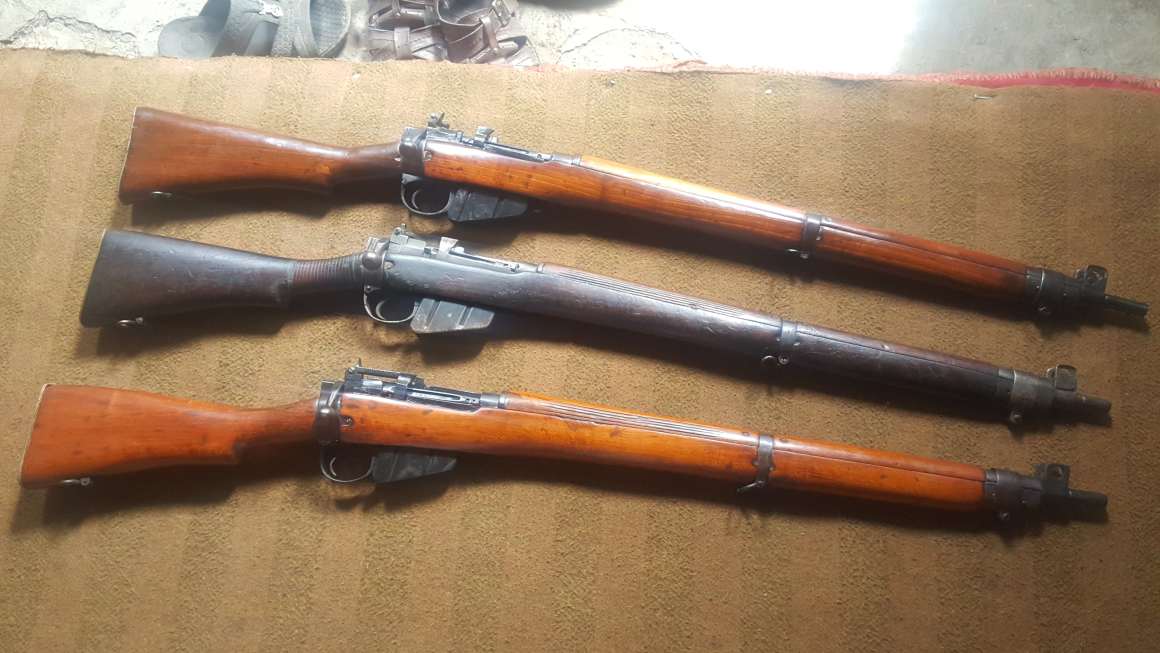
Right face: Three samples of SMLE rifles produced in Darra, New and used examples shown.
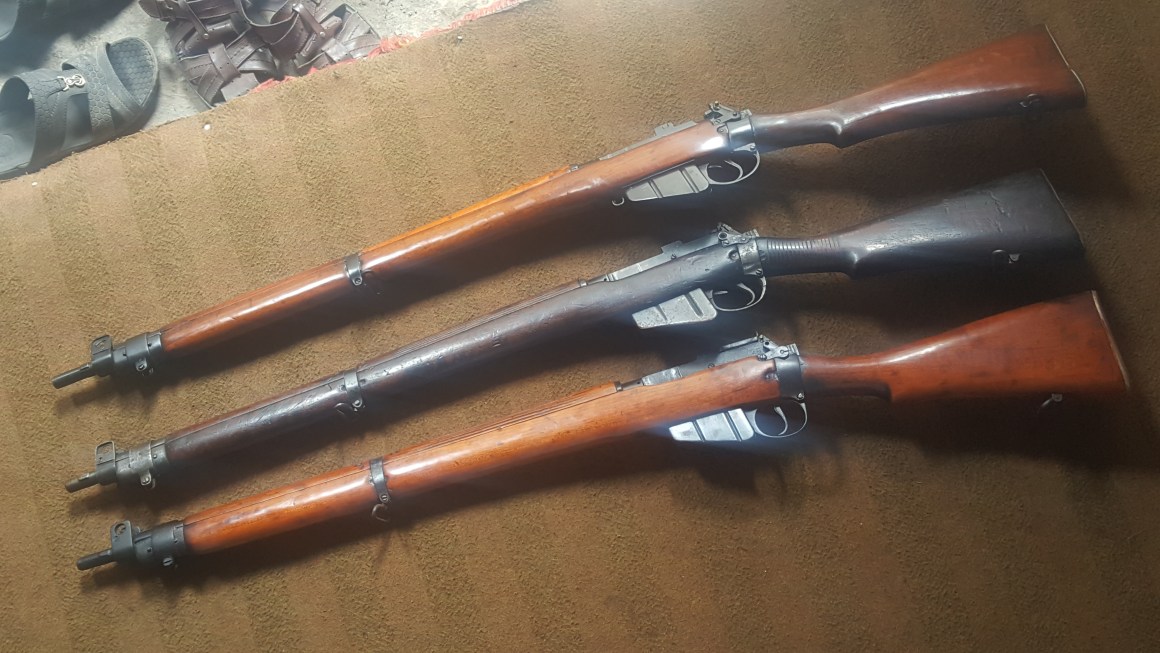
Left face: Three samples of SMLE rifles produced in Darra, New and used examples shown.
Some older background information would be needed to understand why such a place even exists on such a scale as it is or even was. During the British Raj period of the 1800s where the British Empire ruled over these tribal areas, small workshops opened up in many areas across the region to produce exact copies of arms used by the British to fight back against them. Gunsmiths started with muskets and then progressed onto Lee-Enfield action rifles and that was their mainstay for a lengthy period continuing to upgrade and produce newer variations, turning those small shops into larger ones. That is how Darra and many other manufacturing towns and bazaars got their start and from then, the markets grew and grew becoming what they then were known as. Darra’s second major call to fame was that it supplied arms and ammunition to the Mujahideen in Afghanistan during the 1979-1989 Soviet-Afghan War, some say it was even supported by the federal government too at this point. More recently, Darra’s notoriety came to surface as ill-informed people conducting poor journalism claimed it was a black market and that the gunsmiths manufactured guns in mud huts, with basic tools using their bare hands. Putting this to rest, let me start with calling it a black market; this is incorrect as the areas where these markets were/are based comes under its own tribal laws and governance much different to the rest of Pakistan, they are operating well within their own laws therefore it is not a black market in any sense within these borders. There is an element of truth to the thought of mud huts, bare hands and rudimentary methods but the times long past, when this was the norm, are not an indication of how things are in this day and age. Yes, some processes such as heat-treating and finishing are done in so-called mud huts and outdoors under makeshifts structures (this is much needed for ventilation) however the actual workshops are almost always in brick structures and the gunsmiths utilize milling machines, CNC machines and other tools to make their products. Yes, they do use basic tools but those are used to fit and finish the firearm and not to actually manufacture or produce it.
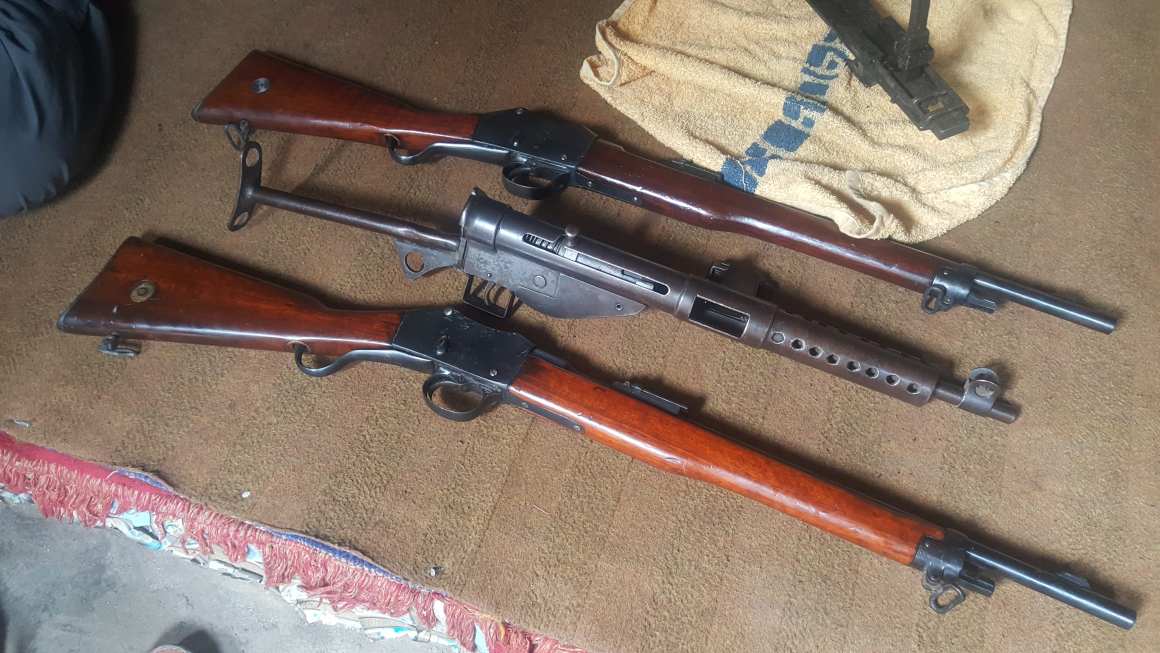
Right face: An Enfield produced Martini Henry type rifle, a Darra STEN copy and a Darra Martini Henry action type rifle.
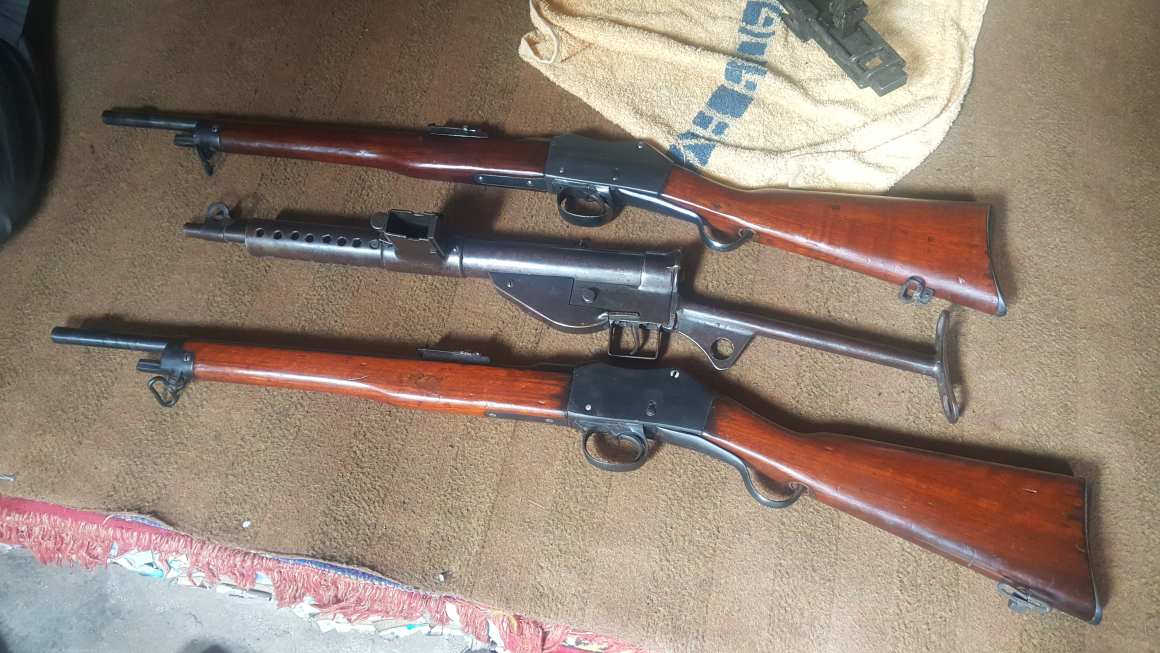
Left face: An Enfield produced Martini Henry type rifle, a Darra STEN copy and a Darra Martini Henry action type rifle.
A negative misconception in regards to the firearms produced is the thought that they aren’t heat-treated or are of poor quality. This isn’t true for the most part as they do go through a heat-treating process, however the detractor is that the method of heat-treating leaves a lot to be desired, especially in the cheaper copies. Many users of lower quality copies complain of metal warping and deformation causing a firearm to become inoperable or dangerous to use, this is what leads to people surmising that all arms made in such areas are no good. This is an issue for lower quality copies, a lower quality firearm will have its flaws as it is not built using quality material and to the same tolerances as a firearm made to exact specs with all care taken in production. At the end of the day, you must repeat the same phrase to people who ask why a cheap item is no good; you get what you pay for – if you want a cheap item, you will get a cheap item that will end up having issues or breaking much like any cheap thing you buy.
Moving away from the negatives, let us talk about positives. Apart from the exquisite food that the food gurus cook up there, Darra is also famous for some of the firearms designs to come out of its shops – most notable is the infamous AKMSU which resides in the Royal Armouries, Leeds, UK. Even though that particular firearm could have been made elsewhere in FATA or Afghanistan by a number of other gunsmiths, it has been linked to Darra due to the town being the main source of arms for sale and the similar types of AK designed copies/modifications known to have come out of there. I could list an almost infinite number of firearms designs displaying their know-how such as the modified SKS made to resemble an AK, or the well-known 8mm bolt-action faux AK and even the more recent AK M4geries. Forget all of those firearms, the gunsmiths themselves are the ones to keep this market and tradition alive, it’s them you have to appreciate as without them there would be more-or-less nothing left of the industry. The ingenuity and skill they have has made Darra a household name throughout the region and extending to much of the world, even to those who are not versed on firearms.
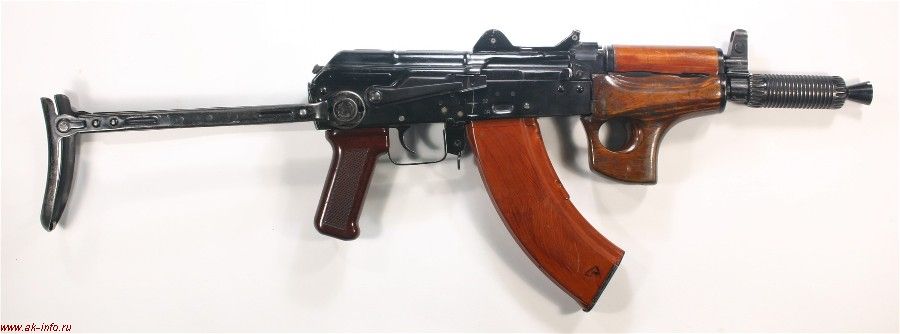
AKMSU – Royal Armouries, Leeds, UK. Image courtesy of Rob stott (AK Catalogue)
Darra has managed to stand against the tide of time and change in an increasingly connected world and holds its own against all odds but has still found a way to use newer technologies and retain its own methods & procedures of manufacturing in its regular business. Even with all that, there is now news that changes things, FATA and Darra with it, will finally be incorporated into the neighboring KPK (Khyber Pakhtunkhwa) province of Pakistan. Regrettably, this means that their own tribal laws will now be abolished and government/regional laws and regulations will be implemented in its place there. The whole town’s industry will be made to register for licenses in either manufacturing or dealing sectors or be shut down. It is said that they will have easier access to raw materials and the costs of business will hopefully decrease, this is something that we can only hope does not destroy this historic industry. Darra will move into the new age with much newer equipment and tooling plus workshops and industrial estates that are planned to be built there and in other places with support of the current federal government of Pakistan. It is planned that arms manufactured there will be available to international markets via some of my contacts from the very near future, that is something that we can all look forward to and it will keep this free slice of the world running for the future to come.
Darra truly is the home of the last gunsmiths of the Khyber Pass. The memory of this industry must be kept alive, even when it ceases to be what it was under its tribal laws.

Fog clings to a never-ending row of low-rise buildings down the length of a dusty road, it’s early, around eight o’clock on a cool April morning. The fog clears and voices breakthrough and you see the first glimpses of the large bazaar, sounds of shutters slamming open, doors being unlocked and people greeting each other as their day starts. The occasional chatter of gunfire can be heard as firearms are test fired nearby.
Darra Adam Khel. This bustling town is situated in modern-day Pakistan, a stone’s throw from the Pak-Afghan border. What makes it so special? You may ask and the answer lies within the myriad of myths and legends put out over the years.
As of this year, 2019, Darra is the last main tribal arms market and manufacturing town that remains in the Pak-Afghan FATA region (Federally-Administered Tribal Region – FATA pronounced Faa-Thaa locally), the last vestige of old-world freedom in the area. Over the last few years, the other manufacturing hubs and markets in towns like Landi Kotal, just a few minutes’ drive from Torkham border on the Khyber Pass, have finally died out leaving a handful of shops and a couple of gunsmiths who repair the large number of firearms still found across the region. Peshawar’s massive arms bazaars have also disappeared leaving a few licensed manufacturers in a small industrial estate on its outskirts and a few licensed dealers scattered throughout the city.
Darra held out against the threat of the Taliban in the early 2010s, fighting them off on a number of occasions seeing as they had the arms, supplies and manpower to fend for themselves. They are no friend to these Taliban as you can see even though they have been linked by a few journalistic sources with selling them an enormous number of arms and ammunition. Contrary to popular belief that the market is now dead or not operating, the bazaar still thrives with many firearms bought and sold daily in its now-legendary bazaar. Yes, there were times were the shutters ere down but this was always just a façade, something that happened on the face and business continued in the back alleys and dusty basements.
However, the town of thousands of arms dealers and manufacturing workshops has been relegated to around a thousand of both due to the global war on terror and its impact on the global arms trade and international smuggling routes. They do not get as much as they used to though they still have a steady but small supply of items that get through to them even to this day. Due to this war on terror, the FATA area – which for many years managed to retain its autonomy, was regulated to prohibit the sale and ownership of explosive type ordnance and large-caliber arms such as HMG’s (e.g: DsHK / KPV) and up to the general population there. Fortunately, Darra still maintains its hold on the trade of tribal arms throughout the now regulated tribal areas and still holds a monopoly on arms manufactured there that are sold within Pakistan and Afghanistan too.
The war on terror has a lot of detriments with the main one being that it has increased the price of arms so much; that now an AK rifle which would have cost approximately Rs10,000 (~£55/~$67), around fifteen years ago, now costs a minimum of around ten times that. Yes, as with all markets, prices do fluctuate depending on many local and regional factors but prices still remain relatively high due to this. Genuine, original factory-made arms command a high premium on the market as a whole throughout the Pak-Afghan region and this has meant that locally made arms are sold more than originals due to the somewhat extortionate prices that can be seen. Due to soaring inflation and prices of raw material, locally made arms now cost the same as originals were only a decade or so ago.

Right face: Three samples of SMLE rifles produced in Darra, New and used examples shown.

Left face: Three samples of SMLE rifles produced in Darra, New and used examples shown.
Some older background information would be needed to understand why such a place even exists on such a scale as it is or even was. During the British Raj period of the 1800s where the British Empire ruled over these tribal areas, small workshops opened up in many areas across the region to produce exact copies of arms used by the British to fight back against them. Gunsmiths started with muskets and then progressed onto Lee-Enfield action rifles and that was their mainstay for a lengthy period continuing to upgrade and produce newer variations, turning those small shops into larger ones. That is how Darra and many other manufacturing towns and bazaars got their start and from then, the markets grew and grew becoming what they then were known as. Darra’s second major call to fame was that it supplied arms and ammunition to the Mujahideen in Afghanistan during the 1979-1989 Soviet-Afghan War, some say it was even supported by the federal government too at this point. More recently, Darra’s notoriety came to surface as ill-informed people conducting poor journalism claimed it was a black market and that the gunsmiths manufactured guns in mud huts, with basic tools using their bare hands. Putting this to rest, let me start with calling it a black market; this is incorrect as the areas where these markets were/are based comes under its own tribal laws and governance much different to the rest of Pakistan, they are operating well within their own laws therefore it is not a black market in any sense within these borders. There is an element of truth to the thought of mud huts, bare hands and rudimentary methods but the times long past, when this was the norm, are not an indication of how things are in this day and age. Yes, some processes such as heat-treating and finishing are done in so-called mud huts and outdoors under makeshifts structures (this is much needed for ventilation) however the actual workshops are almost always in brick structures and the gunsmiths utilize milling machines, CNC machines and other tools to make their products. Yes, they do use basic tools but those are used to fit and finish the firearm and not to actually manufacture or produce it.

Right face: An Enfield produced Martini Henry type rifle, a Darra STEN copy and a Darra Martini Henry action type rifle.

Left face: An Enfield produced Martini Henry type rifle, a Darra STEN copy and a Darra Martini Henry action type rifle.
A negative misconception in regards to the firearms produced is the thought that they aren’t heat-treated or are of poor quality. This isn’t true for the most part as they do go through a heat-treating process, however the detractor is that the method of heat-treating leaves a lot to be desired, especially in the cheaper copies. Many users of lower quality copies complain of metal warping and deformation causing a firearm to become inoperable or dangerous to use, this is what leads to people surmising that all arms made in such areas are no good. This is an issue for lower quality copies, a lower quality firearm will have its flaws as it is not built using quality material and to the same tolerances as a firearm made to exact specs with all care taken in production. At the end of the day, you must repeat the same phrase to people who ask why a cheap item is no good; you get what you pay for – if you want a cheap item, you will get a cheap item that will end up having issues or breaking much like any cheap thing you buy.
Moving away from the negatives, let us talk about positives. Apart from the exquisite food that the food gurus cook up there, Darra is also famous for some of the firearms designs to come out of its shops – most notable is the infamous AKMSU which resides in the Royal Armouries, Leeds, UK. Even though that particular firearm could have been made elsewhere in FATA or Afghanistan by a number of other gunsmiths, it has been linked to Darra due to the town being the main source of arms for sale and the similar types of AK designed copies/modifications known to have come out of there. I could list an almost infinite number of firearms designs displaying their know-how such as the modified SKS made to resemble an AK, or the well-known 8mm bolt-action faux AK and even the more recent AK M4geries. Forget all of those firearms, the gunsmiths themselves are the ones to keep this market and tradition alive, it’s them you have to appreciate as without them there would be more-or-less nothing left of the industry. The ingenuity and skill they have has made Darra a household name throughout the region and extending to much of the world, even to those who are not versed on firearms.

AKMSU – Royal Armouries, Leeds, UK. Image courtesy of Rob stott (AK Catalogue)
Darra has managed to stand against the tide of time and change in an increasingly connected world and holds its own against all odds but has still found a way to use newer technologies and retain its own methods & procedures of manufacturing in its regular business. Even with all that, there is now news that changes things, FATA and Darra with it, will finally be incorporated into the neighboring KPK (Khyber Pakhtunkhwa) province of Pakistan. Regrettably, this means that their own tribal laws will now be abolished and government/regional laws and regulations will be implemented in its place there. The whole town’s industry will be made to register for licenses in either manufacturing or dealing sectors or be shut down. It is said that they will have easier access to raw materials and the costs of business will hopefully decrease, this is something that we can only hope does not destroy this historic industry. Darra will move into the new age with much newer equipment and tooling plus workshops and industrial estates that are planned to be built there and in other places with support of the current federal government of Pakistan. It is planned that arms manufactured there will be available to international markets via some of my contacts from the very near future, that is something that we can all look forward to and it will keep this free slice of the world running for the future to come.
Darra truly is the home of the last gunsmiths of the Khyber Pass. The memory of this industry must be kept alive, even when it ceases to be what it was under its tribal laws.
